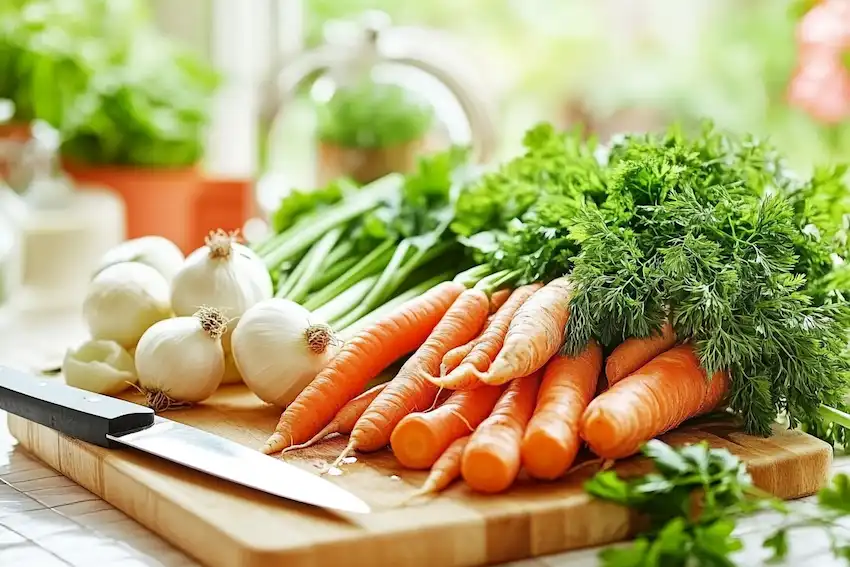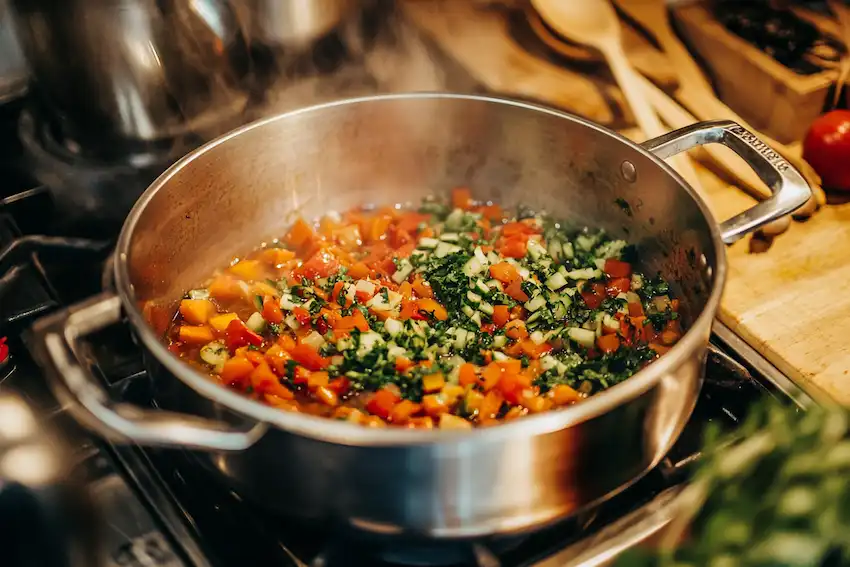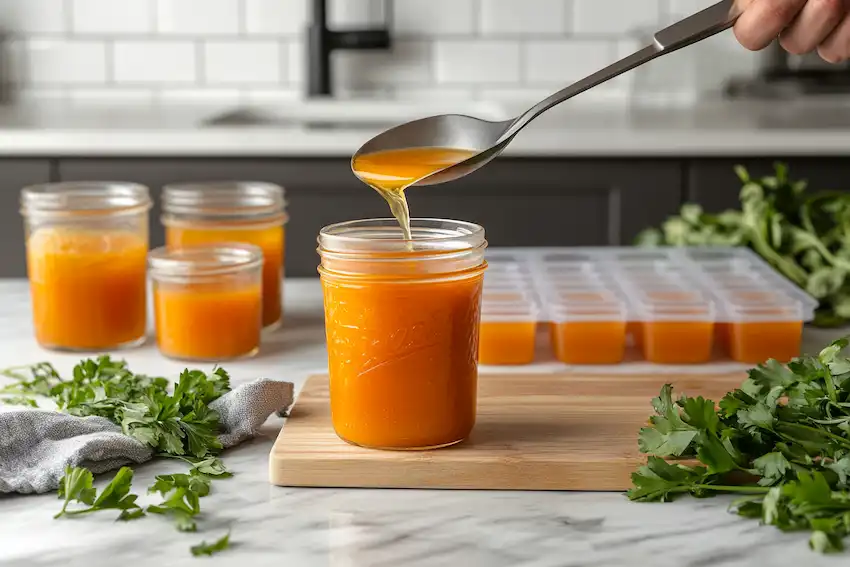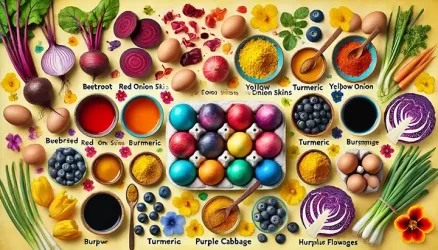Homemade Vegetable Broth Without Chemicals: The Best Way to Prepare It!
Making homemade vegetable broth is an excellent way to boost the flavor of your dishes while keeping things natural and chemical-free. Store-bought broths often contain additives, excess sodium, and artificial flavors, but by creating your own broth from scratch, you control the ingredients, ensuring a healthy and nutrient-rich base for your soups, stews, and more. Here’s the ultimate guide to making a flavorful, preservative-free vegetable broth that you can store and use in a variety of ways.
Why Make Your Own Vegetable Broth?

Homemade vegetable broth offers several advantages over store-bought options. It’s:
- Chemical-free: No preservatives, excess sodium, or artificial ingredients.
- Nutrient-dense: Packed with vitamins and minerals from fresh vegetables.
- Customizable: You can adjust the flavors to suit your taste or dietary preferences.
- Cost-effective: It’s a great way to use leftover vegetables, reducing waste.
By making your own broth, you can also add specific vegetables like lamb’s quarters or wild spinach, which are known for their incredible health benefits. You can learn more about their nutritional value and how to use them in recipes from these helpful guides on lamb’s quarters wild spinach recipes and the health benefits of lamb’s quarters.
Ingredients You’ll Need
- 3 carrots – Adds sweetness and earthiness.
- 1 leek – Provides a mild, oniony depth.
- 2 parsnips – Enhances sweetness with a slightly nutty flavor.
- 2 parsley roots – Adds a peppery, herbal kick.
- 1 onion – Creates a savory base.
- 2 cloves of garlic – Adds warmth and complexity.
- ½ kohlrabi – Offers a mild cabbage-like flavor.
- ½ celeriac – Boosts earthy, celery-like flavors.
- 1 piece of turmeric – Adds color and anti-inflammatory benefits.
- A handful of fresh parsley – For a fresh, herbal note.
- Sunflower oil – Helps release the vegetables’ natural juices.
- 80 grams of salt – Enhances flavor and acts as a preservative.
Step-by-Step Instructions

1. Prepare the Vegetables
Wash and peel all the vegetables, then chop them into medium-sized chunks. Uniform sizes will ensure even cooking and help you achieve a balanced flavor profile.
2. Sauté the Vegetables
Heat sunflower oil in a large pot over medium heat. Add the chopped vegetables and sauté them for 5-7 minutes, stirring occasionally. This enhances their flavors through gentle caramelization.
3. Simmer Until Tender
Cover the pot and lower the heat. Let the vegetables cook in their own steam for about 8 minutes until they’re tender. This step intensifies the flavors and creates a rich broth base.
4. Cool and Blend (Optional)
Once the vegetables have softened, you can choose to blend the mixture for a smoother texture. Use an immersion blender or food processor to purée the vegetables, although this is optional.
5. Freeze for Long-Term Storage
After cooling, divide the broth into portions. Use ice cube trays or airtight containers to store it. For extended storage, wrap the broth in aluminum foil before freezing. Properly stored, your broth can last for months.
How to Use Your Vegetable Broth
- Soup Base: Ideal for a variety of soups, including hearty vegetable or creamy bisques.
- Cooking Grains: Use instead of water when cooking rice, quinoa, or couscous for added flavor.
- Braising Vegetables: Enhance the flavor of mushrooms, greens, or root vegetables by braising them in broth.
- Sauces and Gravies: Perfect for adding depth and richness to sauces or gravies.
Benefits of Homemade Vegetable Broth
- Rich in Nutrients: Filled with vitamins, minerals, and antioxidants from fresh vegetables.
- Boosts Flavor: Enhances the natural flavors of your dishes without chemicals or preservatives.
- Eco-Friendly: Helps reduce food waste by utilizing leftover vegetables.
- Budget-Friendly: Made from ingredients you likely already have, reducing the need for store-bought products.
Tips for Success
- Seasoning: Start with 80 grams of salt and adjust as needed. You can always add more later.
- Customize the Vegetables: Experiment with different vegetables, such as lamb’s quarters or wild spinach, to enhance the nutritional profile and flavor of your broth.
- Avoid Overcooking: Don’t cook the vegetables for too long, as they may lose some flavor. Stick to a cooking time of around 8-10 minutes for best results.

Making your own vegetable broth is a rewarding process that results in a flavorful, healthy, and chemical-free base for all your dishes. With fresh ingredients and minimal effort, you’ll have a versatile ingredient that enhances your cooking while supporting your health. Plus, the eco-friendly aspect of using leftover veggies makes it a win for both your kitchen and the planet. Try incorporating this broth into your meals, and enjoy the rich, natural flavors it brings to every dish.



















